
UX Lab - Types of ecommerce model and determining site access
How your business operates, or wants to operate, will affect the type of ecommerce solution that you provide. What you sell and who you sell to can determine the most suitable route for your online store(s). Many businesses operate across several or all channels, both online and offline. and will generally fall into five broad categories or ecommerce channels
B2C (Business-to-Consumer)/Retail Ecommerce
Business-to-Consumer Ecommerce or Retail Ecommerce is often what most people think of when they consider what ecommerce is. In it’s most basic form, it is one company selling goods to their end users online. This might be exclusively via a website (known as pureplay ecommerce) or might be an ecommerce channel as part of a wider offering that could include stores or other sales channels (Omni-channel Commerce) like Longacres.
B2B (Business-to-Business) Ecommerce
Business-to-Business Ecommerce involves one business selling their products to other businesses. For example, Silmid sell silicones, sealants, adhesives, lubricants, cleaning agents and surface treatments to the aviation and defence industries, but don’t actively sell those same products to individuals. B2B companies are often manufacturers, but could also take the form of wholesalers or distributors where they sell a number of different brands from many manufacturers like Silmid.
B2B2C (Business-to-Business-to-Consumer) Ecommerce
Business-to-Business-to-Consumer Ecommerce is often the first step for manufacturers towards launching a full-blown D2C ecommerce channel. It’s used as a strategy to help them reach their end users, and help determine if the direct demand is there, without upsetting their distribution channel or expanding their operation to manage their own distribution and fulfilment. It also helps the distributor, as they don’t have to spend money purchasing the stock, promoting the products, or running the ecommerce store.
In B2B2C a manufacturer will run their own D2C Ecommerce store, selling their products, and taking payment from the customer, but the fulfilment of those orders will be completed by one of their distributors. So, as far as the customer is concerned, they are placing the order directly with the manufacturer, but once the order is received, the manufacturer forwards it to the distributor, who holds stock and handles delivery for them. The distributor will then receive a pre-agreed percentage of the sale for providing this service.
D2C (Direct-to-Consumer) Ecommerce
Direct-to-Consumer Ecommerce involves manufacturers like Maximuscle selling directly to their end users themselves, handling all elements of the online business including, warehousing and fulfilment. Traditionally, many manufacturers have always sold to their end users through third-party channels like resellers or retailers. However, the deployment of D2C Ecommerce channels has been steadily growing in popularity as despite the initial cost of establishing and running an online business, it gives manufacturers a direct route to their customers and allows them to control all aspects of that relationship. With no third-party resellers, it also enables them to make the highest returns. D2C Ecommerce can also run in conjunction with other third-party channels as long as any channel conflict is mitigated.
C2C (Consumer-to-Consumer) Ecommerce
Consumer-to-Consumer Ecommerce is online trade between private individuals where one is a seller and the other a buyer. It is most often facilitated by an online marketplace such as eBay, Etsy or Amazon Marketplace.
Once you've established which model or models are most appropriate for your business, you also need to determine the level of access that you will grant users and customers who access your site.
Determining the level of access to your ecommerce site
The world of ecommerce has many complexities and determining what users are able to see, or do, when they first visit your site will be part of your strategy, particular when selling to the trade (B2B ecommerce). Using real-life examples, below are just a number of ways in which the user’s workflow can vary in how they interact with your site, depending on the access they are granted
Completely Private
This type of site is completely hidden behind a login that is provided to them by the merchant. The visitor cannot see products, prices, add anything to the basket, or checkout. There is no ability to even request an account just a phone number, or live chat, to get in touch to request access. Access is only available via invitation or following an offline request.
For example, Papergraphics
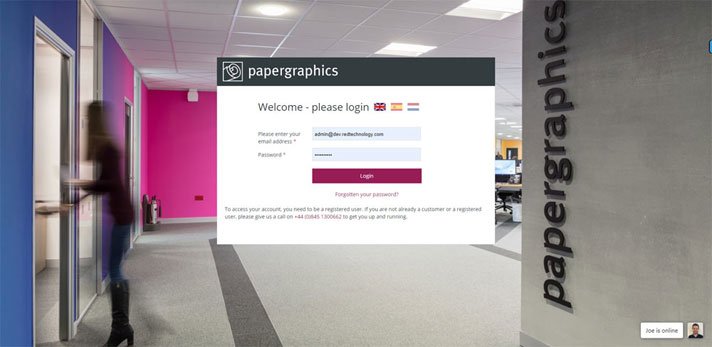
Conditions can be applied to any component which determine if and when it will be shown.
Almost Completely Private
This type of site is almost completely hidden behind a login that is provided to them by the merchant. Customer cannot see products, prices, add anything to the basket, or check out. The only difference is that the customer can see some general company information or apply for an account. Their request is sent to the merchant but access to the site is dependent on approval, and not granted immediately.
For example, DK Tools
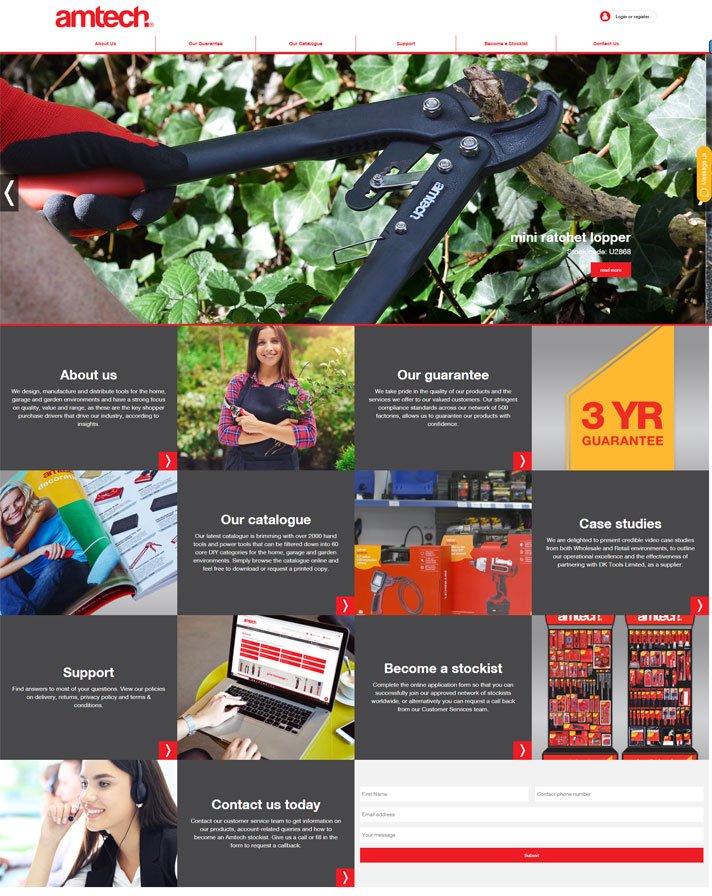
Users can see a small amount of information and contact details but are unable to view products and pricing, or check out.
Mostly Private
This type of site is also completely hidden behind a login that is provided to them by the merchant. Customer cannot see products, prices, add anything to the basket, or checkout. The only difference is that the customer can apply for access to the site if they are an existing customer, or apply for an account if they are a new customer. A request is sent to the merchant but access to the site is dependent on approval and not granted immediately.
For example, Gisela Graham
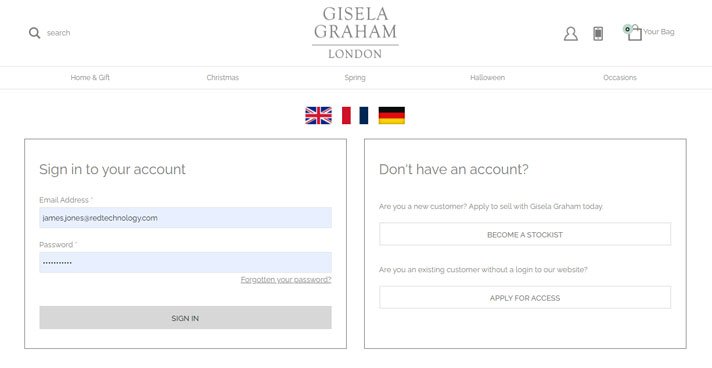
Conditions can be applied to any component which determine if and when it will be shown.
Semi-Private
This type of site is not hidden - the site pages and product catalogue are visible to users - but still has restrictions in place for unregistered customers. This forbids them to see prices, add items to the basket, or checkout. Customers can register for access to the site if they are an existing customer, or apply for an account if they are a new customer. Rather than send a request to the merchant, access to the site is granted immediately upon registration.
For example, Something Different Wholesale
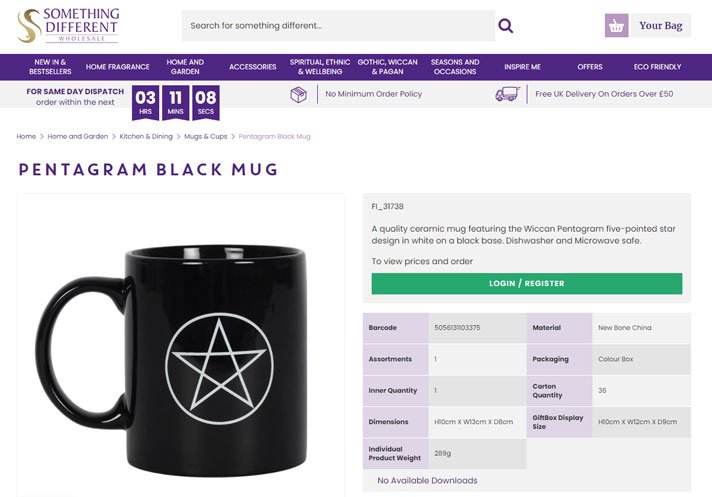
Customers can view products in detail but can't see pricing, or add them to the basket without having an account.
Partly Public
Catalogue is visible to the public but pricing is on application. Users can either request a quote on the products they are looking for without an account, or apply for an account. An account request is sent to the merchant but access to the site is dependent on approval and not granted immediately.
For example, Ultimate Industrial
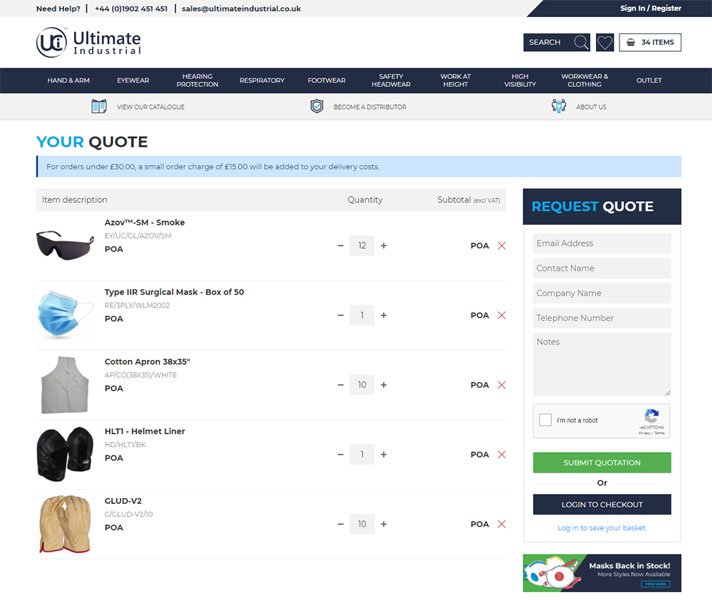
Users can add items to the basket for a quote, but can't see prices or checkout until they have registered for an account.
Almost Public
Users can see products, pricing and checkout but they are required to register for an account to check out as there is no guest checkout option.
For example, Kit Online
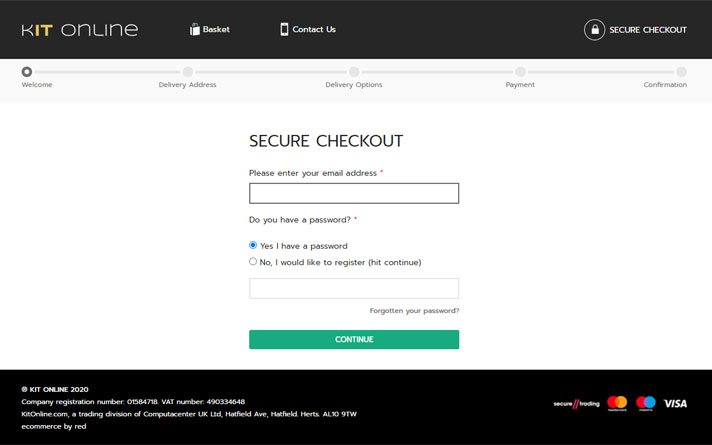
Users need to register for an account in order to purchase.
Public
Nothing on this type of site is hidden from the user so they can see the entire catalogue and any pricing, meaning they can buy and checkout easily. There is no registration required in order to checkout, but users are offered the chance to create an account at the end of checkout to make re-ordering easier and quicker.
For example, Pulsin
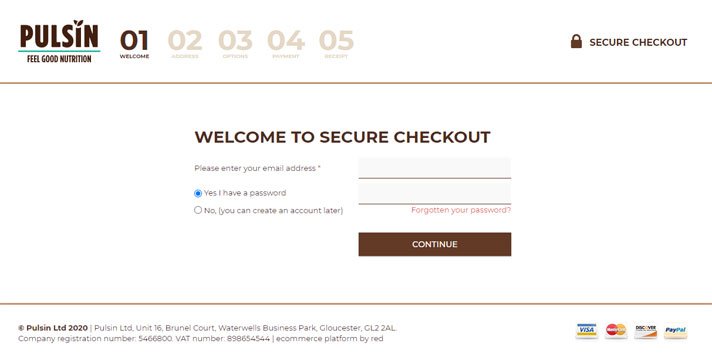
Users can check out without having or creating an account.
These examples show how the flexibility of tradeit can be subtly adapted to your business model and user workflow, something that many other platforms can't offer. For more information on adapting your businesses' ecommerce requirements to suit your model and user workflow, please get in touch.










